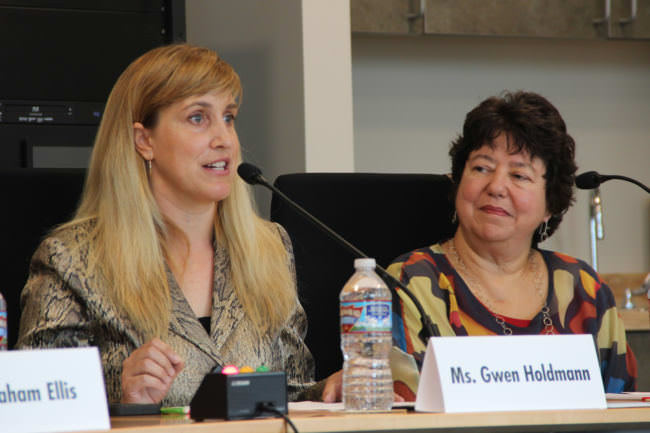
When it comes to emerging energy technologies, many remote Alaska communities are on the cutting edge. That was the message from Cordova this weekend, where U.S. Senator Lisa Murkowski held a field hearing of the Senate Energy and Natural Resources Committee, which she chairs.
The focus of the hearing was microgrids: self-contained electrical grids, which can operate unconnected to any larger transmission system. They’re a necessity for just about every Alaska community off the road system. Most of the grids are powered by diesel, but more and more communities are trying to cut costs by adding renewables like wind or expanding hydropower.
In the process, the state has become a testing ground for technologies that are increasingly interesting to the rest of the world.
Abraham Ellis is with the Sandia National Labs in New Mexico.
“We are interested in those technologies to figure out ways to improve the energy resilience for cities,” he said. “For defense applications, and things like that, that really need to keep on going with electricity supply, even if the normal grid fails for whatever reason.”
Reasons like a major storm or cyber attack.
When Murkowski asked panelists to predict the future of energy in Alaska, she got a range of futuristic answers.
Cordova Mayor Clay Koplin predicted efficient smart grids, in which appliances can communicate with the larger grid about the best times to run.
“As I open my freezer and close it, and take salmon in and out of it, it can learn my habits with very inexpensive robust sensor technology, ” he said. “And if it’s talking to our electric system and knows when renewable energy is available, it can decide when it needs to cycle.”
Meera Kohler, of the Alaska Village Electric Cooperative, said micro nuclear reactors or nuclear batteries might eventually be part of the solution in rural Alaska. And Gwen Holdmann, of the Alaska Center for Energy and Power, said she sees major potential in hydrokinetic systems that can harness the power of rivers, waves and tides.
All of the panelists stressed the need for federal investment in local energy innovation, especially during the state’s current budget crunch.
The Trump administration has proposed major cuts to some renewable energy programs, but Murkowski said Congress has its own priorities.
“And I certainly know where my priorities are,” Murkowski said. “It’s trying to figure out how we here in Alaska can better access our energy resources in a way that allows for affordability, that allows for clean, diverse supplies, and that really helps build on some of the innovation that we’ve seen here in communities like Cordova and around the state.”
Murkowski was accompanied by Senator Maria Cantwell of Washington, the Committee’s ranking Democrat. Cantwell told panelists that when it comes to energy systems of the future, Alaska is “the tip of the spear.”
